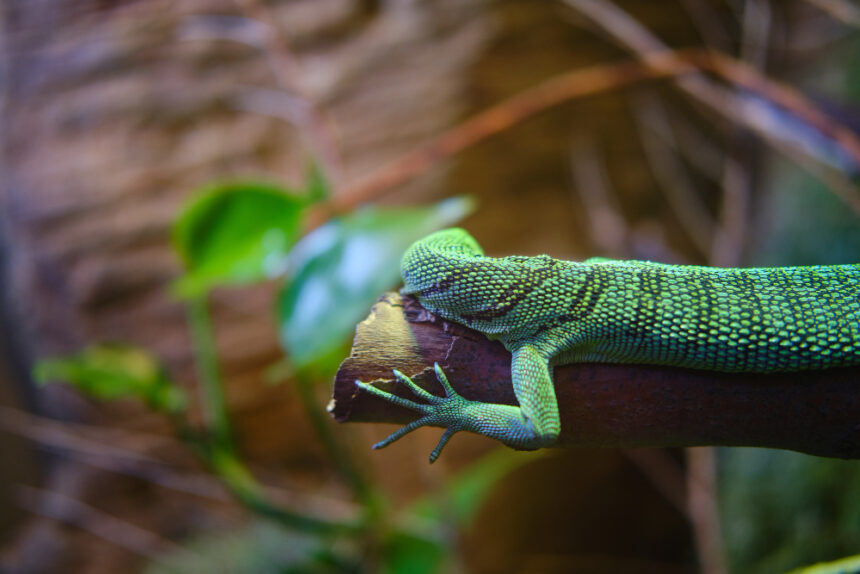Currently, Guam, a small island in the Pacific region, is experiencing one of the worst environmental calamities that is threatening the existence of all its forests.
But the cause of such ecological damage is not a fire, an illness, or cutting down trees by people—it is a snake. The Brown Tree Snake (Boiga irregularis) has been the main culprit for the island’s ecosystem destruction throughout the past several decades since it invaded the island.
Where there was a small problem with the spread of invasive species in Guam, there is now an ecological disaster that not only poses a danger to the island’s forests but also to its entire ecosystem and all the aspects of life on Guam.
The Invasion of the Brown Tree Snake
The Brown Tree Snake is a tree-dwelling reptile found in Australia, the island of New Guinea, and some parts of Indonesia. It got to Guam in the 1940s, probably through military cargo ships during World War II as a stowaway. After that, the snake has adapted to the warm climate of the island and thus has no competitor on this territory.
The snake multiplied at an alarming rate, and being carnivorous animals, which mainly feed on birds, small mammals, and lizards, it posed a big threat to the local population. Some sub-species have been hit hard, including the birds that used to sing the sweet music of Guam’s forests. The island, which originally had 12 endemic bird species, has seen 10 of them disappear to the wrath of the Brown Tree Snake.
Impact on Guam’s Ecosystem
In fact, the threats that the Brown Tree Snake puts forward are beyond the eradication of bird species in Guam alone. The birds are not around to control the breeding of the insects, and as a result, the insects have multiplied and created more instability in the ecosystem.
However, latifunda has negatively impacted the ecosystem; in that, there is poor seed dispersal, which has led to poor tree regeneration, resulting in slow destruction of the forest.
It seems Guam’s forests that were alive once are slowly dying, and there is silence all over them, and they are becoming smaller as time goes on. Such is the case that the loss of one species is likely to cause inconvenience to other species and put the whole system out of order.
For instance, the availability of some tree species impinges on those animals that depend on them for food and shelter. Some of them are bugs, which, due to the availability of food and free space, used to be controlled by birds, but consumers use these plants as well.
Economic and Social Consequences
Looking at the fact that the Brown Tree Snake is an invasive species, one will understand how the snake has affected the economic front. Current problems of forest health and lower levels of biodiversity have had an impact on the tourism industry, which is one of the main components of Guam’s economy.
Ecosystem During our time on this island, people used to get a chance to see beautiful scenery of nature, but now one gets a chance to trek through serene, lonely forests. Besides, the snake is infamous for climbing power lines and causing blackouts on the island, which lead to millions of dollars in losses in terms of damages and lost revenues.
There has also been a great affect in the agricultural sector. The birds and mammals help in controlling insects; hence, without them crops are easily attacked by insects, leading to poor production and food insecurity. The local farmers are in serious attempts to defend their source of income with this continued invasion.
The social implications are equally far-reaching or worse. It is painful for the indigenous people of Chamorro to see native animals and plants disappear from the region and the land spoiled. And the relationships with their culture and the ground they stand on are withering away, which makes them feel helpless and hopeless, Chibokians of the island.
Efforts to Combat the Invasion
Nevertheless, measures are being taken in order to counter a further penetration of the Brown Tree Snakes. The United States government, in conjunction with other authorities and environmental conservation agencies, has put strategies into practice to address this menace. These include using snake traps, detection dogs, and baits, such as poisoned mice dropped by airdrops.
time But these attempts have only proven partial successes in achieving these goals. The snake density is as of now still high, and the threat to the different species in the ecosystem increases as well. Some of the current strategies that are being tried to solve these issues in the long term include the use of biocontrol measures and habitat improvement measures; however, they take time and other important resources.
A large and seemingly unstoppable invader is currently targeting Guam’s forests. Depending on one’s perception and understanding of the aspect of interest, it will be seen as the Brown Tree Snake has inflicted immeasurable havoc on the island’s biodiversity as well as the economy and people’s daily lives.
More efforts are still being made to extend control to the population of snakes, but this is still a serious matter. Efforts, creativity, and collaboration in the protection of Guam’s forests will have to be continuous and international.
ASH CK

